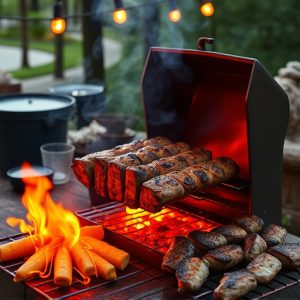Crafting a BBQ beef jerky recipe involves choosing lean cuts like flank steak or eye of round for crispness and flavor depth from marinades with soy sauce, Worcestershire, garlic, and spices. Blend lean and fatty cuts for texture variation. Prepare marinades with BBQ sauce, olive oil, garlic powder, onion powder, salt, and pepper. Bake at 175°F (79°C) for 4-6 hours or dehydrate at 135°F (57°C) for 6-8 hours to preserve flavors and maintain protein integrity for a satisfying, long-lasting snack.
Looking for a satisfying snack that caters to your meat-loving palate? Crafting homemade BBQ beef jerky is an art, offering a robust alternative to store-bought varieties. This guide explores every step of creating a hearty jerky that’s as delicious as it is wholesome. From selecting the perfect cut of beef to seasoning techniques and storage tips, we’ll equip you with the knowledge to make mouthwatering BBQ beef jerky tailored to your tastes.
- Choosing the Right Cut of Beef for Jerky
- – Discussion on lean vs. fatty cuts and their impact on final product.
- Preparation and Marinade
- – Step-by-step process of preparing beef slices and details on key marinade ingredients.
- The Art of Dehydration
- – Techniques for using a dehydrator or oven, including temperature and time guidelines.
Choosing the Right Cut of Beef for Jerky
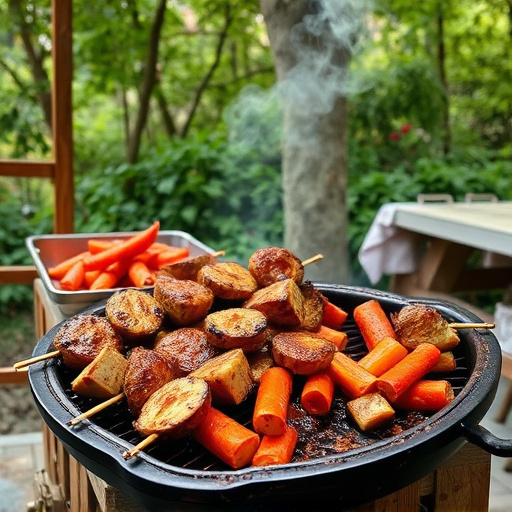
When crafting a hearty BBQ beef jerky recipe, selecting the right cut of meat is paramount. Opt for a lean yet robust piece like the flank steak or eye of round. These cuts have minimal fat, ensuring your jerky stays crisp and doesn’t become rancid quickly. The protein-rich nature of these cuts also translates to a more satisfying snack for meat lovers.
In a BBQ beef jerky recipe, marinating is key to enhancing flavor. Consider using a combination of soy sauce, Worcestershire sauce, garlic, and your favorite spices to infuse the meat with richness and depth. This process should ideally last several hours, or even overnight, to allow the flavors to penetrate deeply into the cut, resulting in a mouthwatering treat that satisfies your appetite for delicious, high-protein snacks.
– Discussion on lean vs. fatty cuts and their impact on final product.
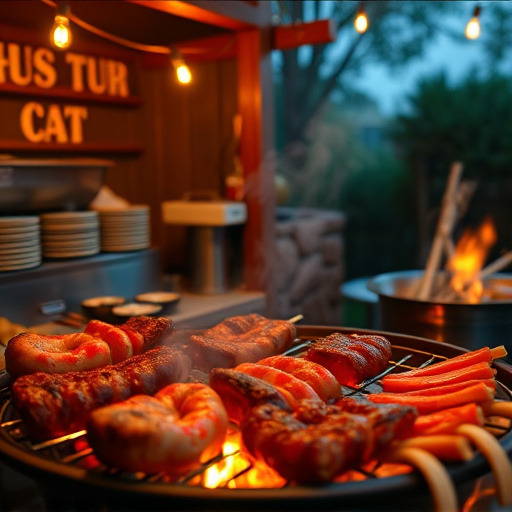
When crafting a bbq beef jerky recipe, the choice between lean and fatty cuts is key. Lean cuts like sirloin or round steak result in jerky that’s incredibly tough and requires significant marinating time to soften. The final product is often crispier with a more intense flavor from concentrated proteins, appealing to those who prefer a chewy texture and robust taste. On the other hand, fatty cuts such as brisket or chuck offer a softer, more tender jerky with a richer, deeper flavor due to the presence of fat. However, too much fat can make the jerky greasy and less crisp, requiring careful preparation to strike the right balance. For optimal bbq beef jerky recipe results, consider a blend of lean and fatty cuts to achieve both flavor depth and texture variety.
Preparation and Marinade
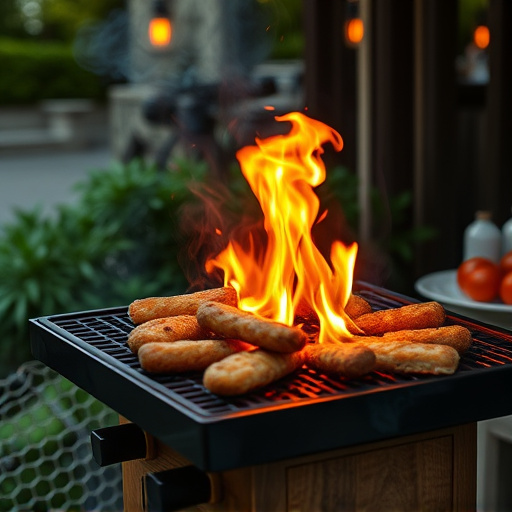
Preparing your own BBQ beef jerky at home is an art, and the key to a delicious, tender result lies in the marinade. Start by combining a generous amount of your favorite BBQ sauce with olive oil, soy sauce, garlic powder, onion powder, salt, and pepper. This base mixture will infuse the meat with flavor during the marinating process. For best results, use a large resealable bag to ensure all pieces of beef are evenly coated. Leave it to marinate in the refrigerator for 8–12 hours, allowing the flavors to penetrate deeply into the meat. The longer the marinade soaks, the more tender your jerky will become.
Once marinated, preheat your oven to a low temperature—around 175°F (79°C). Remove the beef from the bag and place it on a lined baking sheet, ensuring each piece is flat and not overlapping. Bake for approximately 4–6 hours, or until the meat is incredibly tender and easily breaks apart with minimal pressure. The exact time may vary based on your oven and the thickness of the beef, so keep a close eye to avoid overcooking.
– Step-by-step process of preparing beef slices and details on key marinade ingredients.
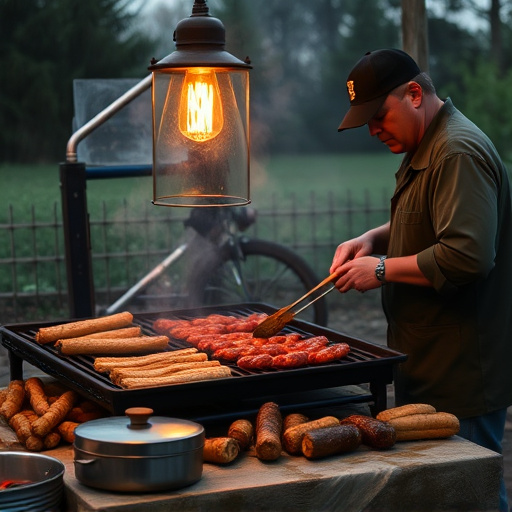
To create a mouthwatering BBQ beef jerky, start by selecting high-quality, lean beef cuts like flank steak or sirloin. Once trimmed and sliced into thin strips, these will be marinated to perfection. The key to an exceptional marinade lies in balancing acidity, sweetness, and savory flavors. Start with a base of apple cider vinegar and brown sugar, which not only tenderize the meat but also add depth of flavor. Next, incorporate garlic powder, onion powder, and a pinch of cayenne pepper for a kick—adjust these spices according to your preferred level of heat. Finish the marinade with a splash of Worcestershire sauce and a drizzle of olive oil, ensuring every slice is coated evenly. Allow the beef to soak in this aromatic mixture for at least 4 hours or, for optimal results, overnight in the refrigerator. This step is crucial in infusing the meat with flavor and making it incredibly tender when dehydrated.
The Art of Dehydration
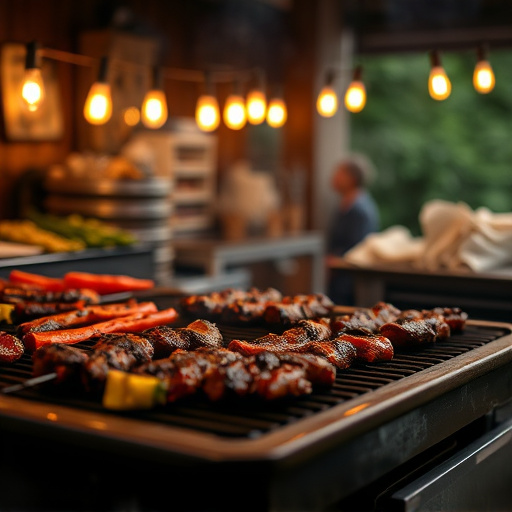
Dehydrating meat is an ancient method that has been perfected over centuries, and it’s at the heart of creating delicious, long-lasting BBQ beef jerky. This process involves slowly removing moisture from raw meat, which not only preserves it but also concentrates its natural flavors and makes for a satisfying snacking experience. When preparing a hearty bbq beef jerky recipe, understanding this art is key.
The science behind dehydration ensures that the protein in the meat remains intact while breaking down some of the fat, resulting in a tender and chewy texture. It’s a game-changer when it comes to transforming fresh beef into a portable, flavorful treat. With precise temperature control and ample air circulation, you can achieve the perfect level of crispiness on the outside and maintain juicy goodness inside each strip—a true delight for meat lovers.
– Techniques for using a dehydrator or oven, including temperature and time guidelines.
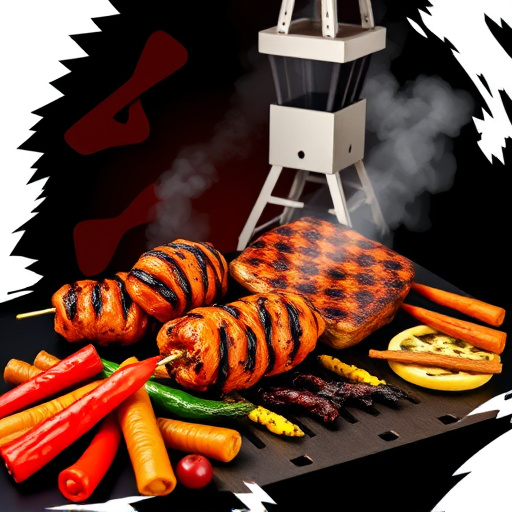
Creating your own BBQ beef jerky at home is an art, and using either a dehydrator or oven allows for precise control over the process. For those with access to a dehydrator, this method is highly recommended due to its energy efficiency and ability to preserve the meat’s natural flavors. Set your dehydrator to approximately 135°F (57°C) and allow the beef slices to dry for around 6-8 hours, or until they reach a desired level of tenderness.
Ovens offer an alternative approach, where you can achieve similar results by heating the oven to 200°F (93°C) and placing the meat on a rack above a baking sheet. The cooking time will vary depending on thickness, but plan for roughly 3-4 hours, ensuring frequent checks to prevent over-drying. The key is to maintain a consistent temperature and adjust the timing as needed, resulting in delicious, crispy BBQ beef jerky tailored to your taste preferences.
